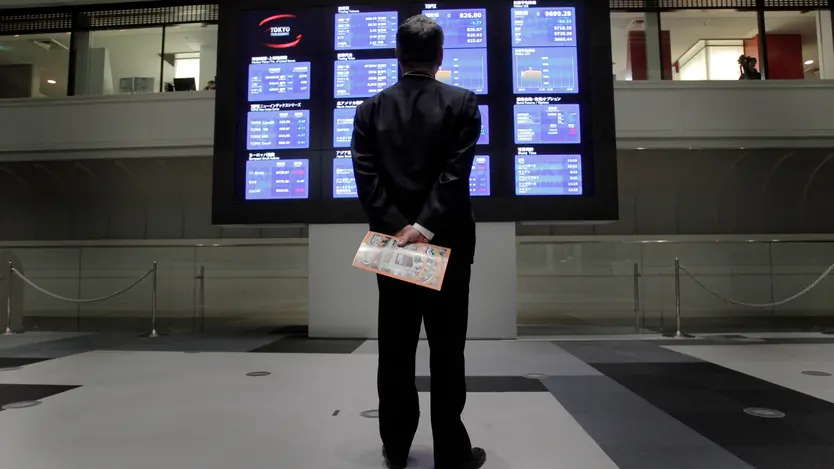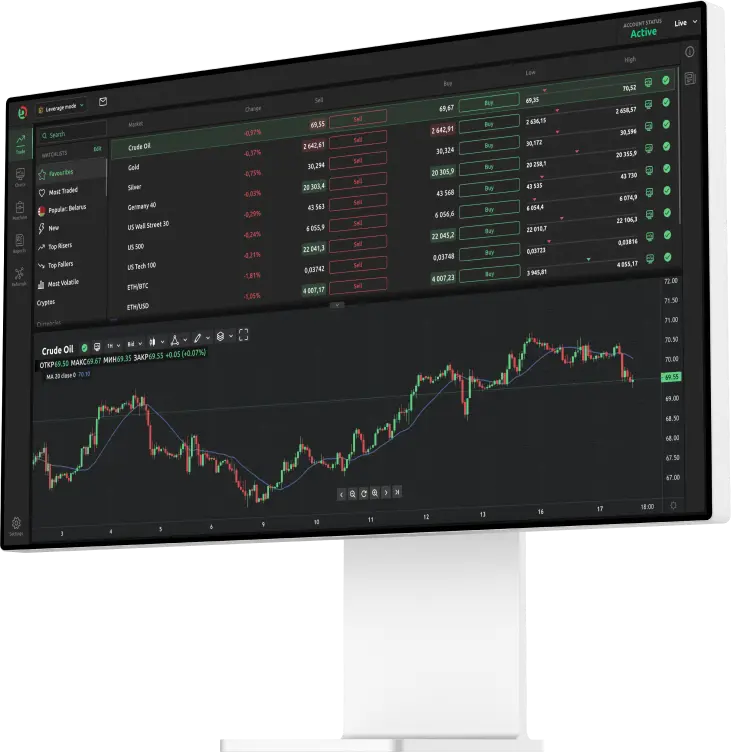This indicator is used to identify potential breakout signals or as a base to define trailing stop-loss orders

Contents
- Average true range indicator explained
- What is average true range (ATR)?
- How to read ATR indicator
- How to use ATR indicator
- ATR breakout alerts
- Trailing stop loss
- FAQs
Average true range indicator explained
The ATR or Average True Range was one of the technical analysis indicators presented in J. Welles Wilder’s book New Concepts in Technical Trading System (Trend Research, 1978).
Wilder considered average true range technical analysis as a tool to measure the volatility of commodities, but it can also be used for other types of assets. As a volatility indicator, ATR doesn’t take into account the price direction. Instead, it examines how much the price of an underlying asset moves during a specific time frame and whether there are price gaps. For an hourly time frame, the ATR indicator value is calculated for each hour. For a daily time frame, the calculation is performed for each day, and so on.
What is average true range (ATR)?
According to Wilder, the average true range indicator formula is centered around the calculation of true ranges for the specified period. It is based on three methods which are fairly simple to use:
- The difference between the current high and the previous close;
- The difference between the current low and the previous close;
- The difference between the current high and the current low.
The true range for the selected period is obtained as the highest value from the above three methods. As the absolute value is considered, it doesn’t matter whether it is positive or negative. The average value is derived from the values for each period, which is 14 periods by default. Wilder smoothed the generated value for a 14-period ATR using the previous ATR value, in the following manner:
ATR = [(Previous ATR x 13) + Current TR] / 14
For periods other than the suggested 14 periods, the general average true range indicator formula is:
ATR = (Previous ATR * (n - 1) + TR) / n
Depending on your trading strategy, you can change the number of periods included in the ATR calculation. Shorter time frames will provide more signals, while longer time frames will provide fewer trading alerts.
How to read ATR indicator
The average true range indicator looks like a single line in a section under your chart and the line can move up or down. Reading the ATR indicator is not complicated: a higher ATR means increased volatility, while a lower ATR signals lower volatility. However, remember that ATR does not give signals about the potential trend direction – it only shows what is happening with the price volatility. Let’s look at the graph below.

You can see that during a stronger upward or downward movement of the price, the volatility is increased.
How to use ATR indicator
The ATR is a useful indicator because it shows what happens with the price volatility of a given asset. However, be careful when defining your average true range trading strategy because the indicator should not be used as a standalone tool. You can combine ATR with price action analysis and with other indicators that will provide alerts about the price direction or the momentum.
The average true range indicator is commonly used by traders to find potential breakouts and to define stop-loss orders to avoid premature termination of their positions.
ATR breakout alerts
The ATR indicator can also be used to find potential breakouts. Try to monitor the ATR value and look for a multi-year low value. When you find such a point, look for the price to break the support level, which will be an indication that the volatility will increase and breakout may appear.
Traders can use the average true range formula to identify potential entry and exit points for their trading positions. Keep in mind that periods of high or low volatility will eventually end, and you can use this to your advantage. For instance, after a period of low volatility, traders expect the volatility to increase and this can be a point where you enter or exit your position.
Trailing stop loss
One way you can use an average true range strategy is to identify potential points where you can set stop-loss orders or trailing stop-loss orders. By using this indicator, you avoid the possibility of placing narrow stop loss in times of high volatility or very broad stop-loss order during low volatility. Look at the following graph to see why ATR can be used when placing a stop-loss order.

The white arrows show periods of increased volatility with respective price movements during the higher volatility (the white circles). By incorporating the ATR in your trailing stop loss decisions, you will ensure that the profit is locked in and that you don’t define tight stop loss, which will result in a premature exit.
In times of decreased volatility (sideways market movement), you can set an adequate stop-loss, which is narrow enough to ensure that you collect a certain level of profits. You can use the ATR value as a base to define your trailing stop, which is beneficial because every time the volatility moves, your stop loss will move as well. When the price action changes are not in your favour, the stop loss can be activated based on the set distance from the ATR value.
Aside from these common applications, traders have developed numerous average true range strategies for determining and confirming potentially profitable signals. Along with the average true range, they also include the moving averages indicator to determine the trend direction or the RSI indicator to measure the momentum.
An ATR trading strategy for a stop loss can be defined when you set your stop-loss order below or above the support and resistance levels. The distance of the stop loss from the ATR value is usually set by traders at one, two or three times the ATR value. Of course, this doesn’t mean that this should be taken as a rule, since traders create their own average true range trading strategies as well as their own general trading strategy.
FAQs
The average true range (ATR) is a tool to measure the volatility of commodities, but it can also be used for other types of assets. As a volatility indicator, ATR doesn’t take into account the price direction. Instead, it examines how much the price of an underlying asset moves during a specific time frame and whether there are price gaps. The ATR is commonly used by traders to find potential breakouts and to define stop-loss orders to avoid premature termination of their positions.
The average true range indicator formula is centered around the calculation of true ranges for the specified period. It is based on three methods, which are fairly simple to use:
- The difference between the current high and the previous close
- The difference between the current low and the previous close
- The difference between the current high and the current low
The true range for the selected period is obtained as the highest value from the above three methods. As the absolute value is considered, it doesn’t matter whether it is positive or negative. The average value is derived from the values for each period, which is 14 periods by default.
The average true range examines how much the price of an underlying asset moves during a specific time frame and whether there are price gaps. The average daily range (ADR) calculation is slighty different. The ADR measures the average daily price range while excluding the price gaps.


